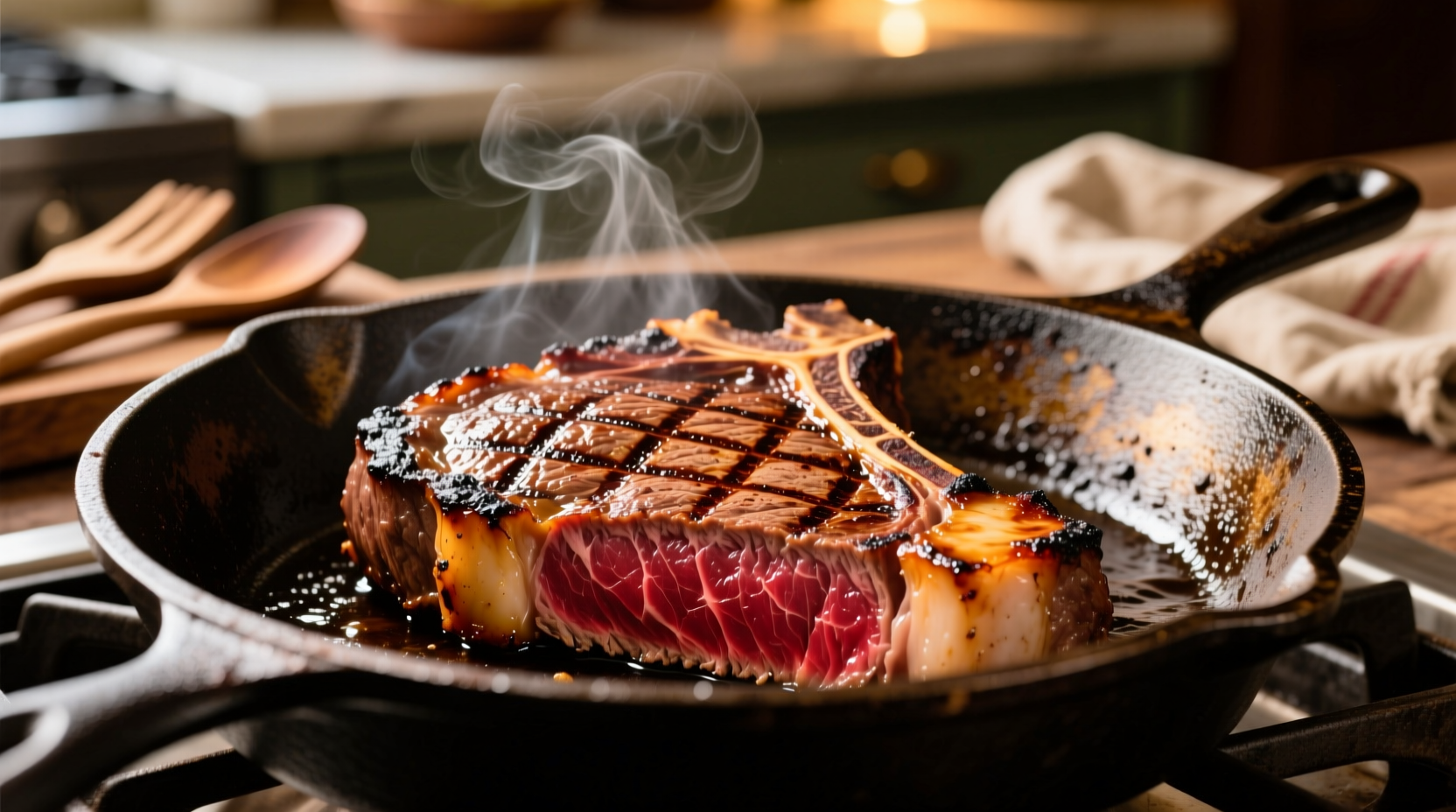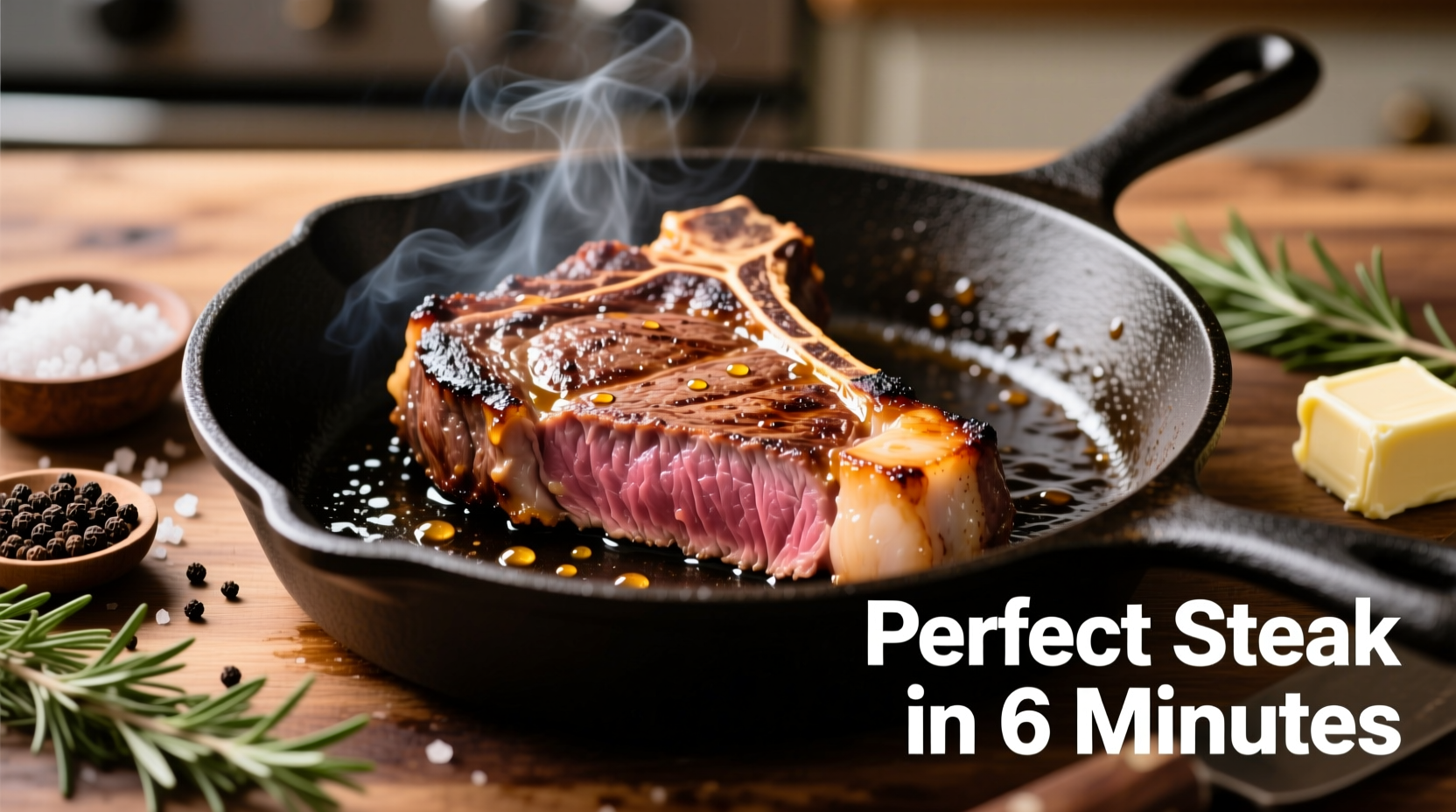The Ultimate Guide to Perfect Cast Iron Steak Every Time
Cooking steak in a cast iron pan delivers unparalleled sear and flavor development that other cookware simply can't match. This method combines intense, even heat with natural non-stick properties when properly seasoned, creating that coveted crust while maintaining juicy tenderness inside. Unlike stainless steel or non-stick alternatives, cast iron retains heat exceptionally well during searing - crucial for developing complex Maillard reaction flavors without overcooking the interior.Why Cast Iron Reigns Supreme for Steak
Cast iron's exceptional heat retention (up to 50% better than stainless steel according to University of Minnesota Extension) creates the perfect environment for steak searing. The material's thermal mass prevents temperature drops when cold meat hits the surface, ensuring consistent browning. Professional chefs favor this method because it develops richer flavor compounds through the Maillard reaction - that complex chemical process responsible for the delicious browned crust.
Steak Selection and Preparation: Setting Yourself Up for Success
Choose steaks at least 1.5 inches thick for optimal results. Thinner cuts risk overcooking before achieving proper sear. Bring your steak to room temperature for 45-60 minutes before cooking - this critical step ensures even cooking throughout. Pat the surface completely dry with paper towels; moisture is the enemy of proper browning.
| Steak Cut | Best For | Thickness Recommendation | Flavor Profile |
|---|---|---|---|
| Ribeye | Maximum flavor | 1.5-2 inches | Rich, buttery, marbled |
| New York Strip | Balance of tenderness | 1.5 inches | Robust, beefy |
| Filet Mignon | Tenderness | 2 inches | Mild, delicate |
| Porterhouse | Sharing | 1.5-2 inches | Combines strip and filet flavors |
Season generously with coarse kosher salt (about 1 teaspoon per pound) at least 45 minutes before cooking. The salt draws out moisture initially, then allows it to reabsorb proteins for better flavor penetration. Add freshly ground black pepper just before cooking to prevent burning.

The Cooking Process: Step-by-Step Timeline
Follow this precise sequence for foolproof results:
- Preheat your empty cast iron pan on medium-high for 5 minutes until smoking slightly. Proper preheating is non-negotiable for restaurant-quality sear.
- Add high-smoke point oil (avocado or grapeseed) - just enough to coat the surface. Butter burns too quickly at these temperatures.
- Place steak in pan away from you to prevent oil splatter. Press gently for full contact but avoid excessive pressure.
- Sear undisturbed for 3-4 minutes until a deep brown crust forms. This is when the magic happens - don't peek!
- Flip and sear second side for another 3-4 minutes. For thicker cuts (over 1.5 inches), tilt pan and spoon hot oil over edges.
- Add aromatics during the last 2 minutes: garlic cloves, fresh thyme, or rosemary sprigs enhance flavor through infusion.
- Check internal temperature with instant-read thermometer. Remove steak at 120°F for medium-rare (it will rise 5°F during resting).
- Optional oven finish: For steaks thicker than 1.75 inches, transfer pan to 400°F oven after initial sear until reaching target temperature.
Critical Resting Period: Don't Skip This Step
Rest your steak on a wire rack (not a plate) for 5-10 minutes depending on thickness. This allows juices to redistribute throughout the meat rather than spilling out when cut. Cutting too soon can lose up to 30% of the steak's precious juices according to culinary research from the USDA National Agricultural Library. Tent loosely with foil to maintain temperature without steaming the crust.
Troubleshooting Common Cast Iron Steak Problems
Steak sticks to the pan: Your pan wasn't hot enough before adding steak, or you tried to move it too soon. Wait for natural release - when properly seared, steak will detach easily.
Excessive smoke: This indicates oil has exceeded its smoke point. Use oils with higher smoke points (avocado: 520°F, grapeseed: 420°F) and ensure proper ventilation. Never use olive oil for high-heat searing.
Uneven cooking: Ensure steak is uniform thickness. For irregular cuts like ribeye, position the thicker edge closer to the pan's center where heat concentrates.
Cast Iron Care After Cooking Steak
While your pan is still warm (not scalding hot), clean with hot water and stiff brush - no soap needed. For stubborn bits, use coarse salt as abrasive. Dry thoroughly on stove over low heat, then apply thin layer of oil while warm. Proper maintenance creates the natural non-stick surface essential for perfect steak searing. Avoid soaking or dishwasher use which damages seasoning.
When Cast Iron Might Not Be Ideal
While cast iron excels for most steaks, consider alternatives in specific scenarios:
- Extremely thin cuts (under 1 inch) may overcook before proper sear develops
- Delicate fish steaks require gentler heat control
- Recipes requiring deglazing with acidic ingredients (tomatoes, wine) shouldn't remain in cast iron for extended periods











 浙公网安备
33010002000092号
浙公网安备
33010002000092号 浙B2-20120091-4
浙B2-20120091-4